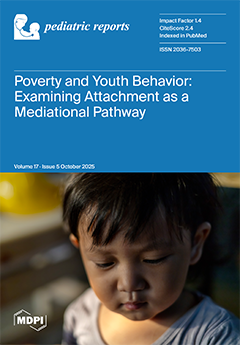Background: Serious bacterial infections (SBIs) in neonates present a significant diagnostic challenge due to nonspecific symptoms and immature immune responses. Early identification is essential to ensure timely treatment and prevent adverse outcomes. This study investigates clinical, laboratory, and epidemiological parameters associated with
[...] Read more.
Background: Serious bacterial infections (SBIs) in neonates present a significant diagnostic challenge due to nonspecific symptoms and immature immune responses. Early identification is essential to ensure timely treatment and prevent adverse outcomes. This study investigates clinical, laboratory, and epidemiological parameters associated with SBI in febrile neonates.
Methods: A retrospective analysis was conducted on neonates hospitalized for suspected SBI at University Hospital Split from 1 January 2023 until 31 December 2024). The data was analyzed using descriptive statistics, Mann–Whitney U test and Chi-square test.
Results: The study included 71 neonates hospitalized with suspected SBI, of whom 38 (53.5%) had a confirmed SBI. Neonates with SBI had a significantly longer hospital stay (
p < 0.001). C-reactive protein (CRP) levels at admission were significantly higher in the SBI group (
p = 0.020), while other laboratory parameters showed no significant differences. The most common diagnosis in the SBI group was urinary tract infection (50%). In urine analysis, abundant bacterial presence, strongly positive leukocyte esterase (3+), and positive nitrite findings were significantly associated with the presence of urinary tract infection (UTI).
Conclusions: In neonates with suspected SBI, elevated CRP levels and prolonged hospital stay were significantly associated with confirmed SBI. Among specific diagnoses, UTI were most frequent, with urinalysis parameters (bacteria, leukocyte esterase, and nitrites) proving useful in identifying affected cases. However, individual clinical signs showed limited diagnostic value, highlighting the importance of combining clinical and laboratory data in early recognition of SBI.
Full article






